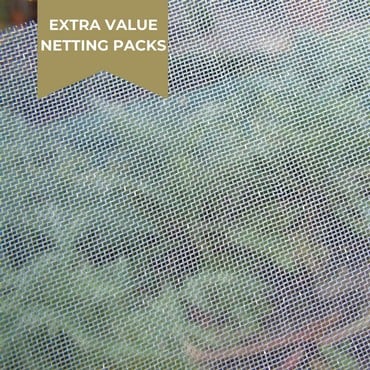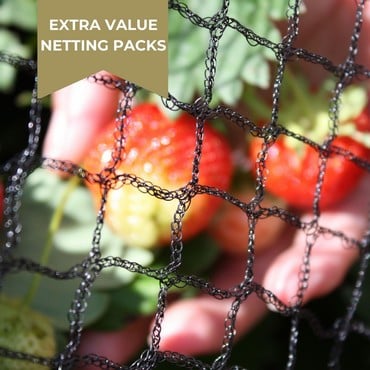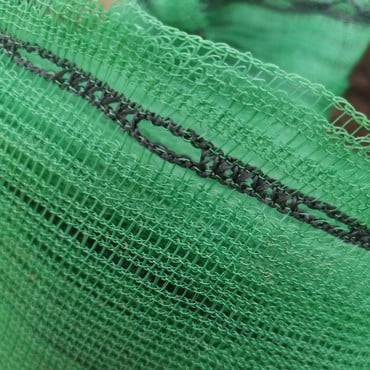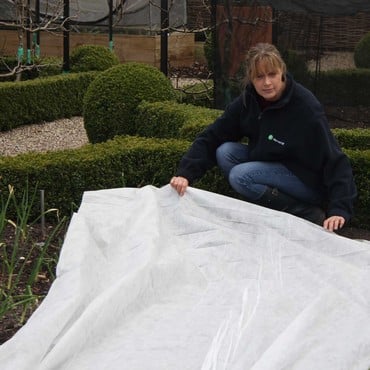 One of the great pleasures of gardening is to grow your own plants from seed. Unfortunately the exhilaration of planting out can quickly be followed by the anguish of seeing young plants nibbled by wildlife or blasted by unseasonal weather. Protecting plants while they get established with garden netting and plant protection is never a job to put off – in fact decide what you might need to keep them safe as soon as you get your packet of seeds.
One of the great pleasures of gardening is to grow your own plants from seed. Unfortunately the exhilaration of planting out can quickly be followed by the anguish of seeing young plants nibbled by wildlife or blasted by unseasonal weather. Protecting plants while they get established with garden netting and plant protection is never a job to put off – in fact decide what you might need to keep them safe as soon as you get your packet of seeds.
In our Kitchen Garden veg crops are always vulnerable so we make great use of the different crop protection netting and garden fabrics available such as fleece, insect mesh, shade netting and bird netting to keep our veg safe.
Our 30gsm Horticultural fleece is ideal for warming early sowings when the air is still chilly. Even more importantly it can save tender crops such as potatoes and courgettes from a late frost or seedlings from hail damage.
Shade netting has a multitude of uses throughout the year. In winter it prevents overwintering crops like broad beans from getting flattened by snow and wind. The mesh netting appears quite coarse but will also provide a slightly warmer environment while allowing rain to pass through – perfect for bringing on growth early in the season. In spring it can be used to foil hungry pigeons waiting to devour young brassicas. As its name implies shade netting can shelter thirsty crops such as celery or lettuce from intense heat and drying winds, reducing the need for watering.
Ultra Fine insect mesh netting is the perfect choice for protecting veg crops from serious insect pests in summer. The tiny size of the mesh stops carrot flies getting through and even prevents cabbage white butterflies laying eggs on brassica leaves. Air can still
circulate through the netting so temperatures are not excessive underneath. The mesh is light enough to float on crops or can be supported on hoops.
 In the Kitchen Garden our raised beds allowing beds to be worked from either side without the need to stand on the soil. Wide shaped protection loops fit these beds and can support sheets of fine mesh or shade netting over taller crops. The netting can easily be rolled back to allow weeding, watering and last but not least harvesting.
In the Kitchen Garden our raised beds allowing beds to be worked from either side without the need to stand on the soil. Wide shaped protection loops fit these beds and can support sheets of fine mesh or shade netting over taller crops. The netting can easily be rolled back to allow weeding, watering and last but not least harvesting.
To make sure vegetable plants have the best possible start seedlings raised in a greenhouse or on your windowsill should be properly hardened off before you plant them out. They will be far less vulnerable to attacks by slugs, cutworms and birds.
‘Soft’ plants may not survive transplanting or will take a severe growth check and a cold frame is ideal to harden off these young plants. Leave the frame closed at first, then open up during the day and finally leave the frame ajar at night.
Once fruit bushes start to ripen birds will soon strip any fruit left un-netted. Small shade tunnels are perfect for keeping determined blackbirds away from rows of strawberries. Currants and raspberries are more easily grown in a fruit cage; if you’ve ever battled with odd-sized bamboo canes and old, stitched-together pieces of net it’s a dead cert that you will always appreciate being able to step inside your own purpose built walk-in fruit cage.































